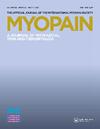Fibromyalgia Syndrome Review
引用次数: 0
Abstract
Ang DC, Jensen MP, Steiner JL, Hilligoss J, Gracely RH, Saha C: Combining cognitive-behavioral therapy and milnacipran for fibromyalgia: A feasibility randomized-controlled trial. Clin J Pain 2013; epub ahead of print. This study intended to evaluate the feasibility of a randomized-controlled trial and to obtain estimates of the effects of combined cognitive-behavioral therapy [CBT] and milnacipran for the treatment of fibromyalgia syndrome [FMS]. Fifty-eight patients with FMS were randomized to one of the three treatment arms: (1) combination therapy [n1⁄4 20], (2) milnacipranþ education [n1⁄4 19] and (3) placeboþCBT [n1⁄4 19]. Patients received either milnacipran [100 mg/d] or placebo. Patients also received eight sessions of phonedelivered CBT or educational instructions, but only from baseline to week 9. Assessments were conducted at baseline, week 9 and week 21. The primary endpoints were baseline to week 21 changes in weekly average pain intensity and physical function [Short Form-36 physical function scale]. Compared with milnacipran, combination therapy demonstrated a moderate effect on improving SF-36 physical function [SE1⁄4 9.42 (5.48), p1⁄4 0.09, effect size1⁄4 0.60] and in reducing weekly average pain intensity [mean difference (SE)1⁄4 1.18 (0.62), p1⁄4 0.07, effect size1⁄4 0.67]. Compared with milnacipran, CBT had a moderate to large effect in improving Short Form-36 physical function [mean difference (SE)1⁄4 11.0 (5.66), p1⁄4 0.06, effect size 1⁄4 0.70]. Despite the presence of concomitant centrally acting therapies, dropout rate was lower than anticipated [15% at week 21]. Importantly, at least six of the eight phone-based therapy sessions were successfully completed by 89% of the patients and adherence to the treatment protocols was greater than 95%. From these results, the authors conclude that a therapeutic approach that combines phone-based CBT and milnacipran was feasible and acceptable. Moreover, the preliminary data supports conducting a fully powered randomized-controlled trial.纤维肌痛综合征综述
Ang DC, Jensen MP, Steiner JL, Hilligoss J, Gracely RH, Saha C:认知行为疗法联合米那西普兰治疗纤维肌痛的可行性随机对照试验。临床医学杂志2013;打印前Epub。本研究旨在评估一项随机对照试验的可行性,并评估认知行为疗法(CBT)和米那西普兰联合治疗纤维肌痛综合征(FMS)的效果。58例FMS患者随机分为三个治疗组:(1)联合治疗组[n1⁄4 20],(2)milnacipranþ education组[n1⁄4 19],(3)placeboþCBT组[n1⁄4 19]。患者接受米那西普兰(100mg /d)或安慰剂治疗。患者还接受了8次电话提供的CBT或教育指导,但仅从基线到第9周。在基线、第9周和第21周进行评估。主要终点是基线至第21周的周平均疼痛强度和身体功能变化[简表-36身体功能量表]。与milnacipran相比,联合治疗在改善SF-36生理功能方面表现出中等效果[SE1⁄4 9.42 (5.48),p1⁄4 0.09,效应大小1⁄4 0.60],在降低周平均疼痛强度方面表现出中等效果[平均差(SE)1⁄4 1.18 (0.62),p1⁄4 0.07,效应大小1⁄4 0.67]。与milnacpran相比,CBT在改善Short Form-36身体功能方面有中大型作用[平均差异(SE)1⁄4 11.0 (5.66),p1⁄4 0.06,效应量1⁄4 0.70]。尽管存在联合中央作用疗法,但中途退出率低于预期[第21周时为15%]。重要的是,89%的患者成功完成了8次电话治疗中的至少6次,并且治疗方案的依从性超过95%。从这些结果中,作者得出结论,结合基于手机的CBT和milnacpran的治疗方法是可行和可接受的。此外,初步数据支持进行完全有力的随机对照试验。
本文章由计算机程序翻译,如有差异,请以英文原文为准。
求助全文
约1分钟内获得全文
求助全文

 求助内容:
求助内容: 应助结果提醒方式:
应助结果提醒方式:


